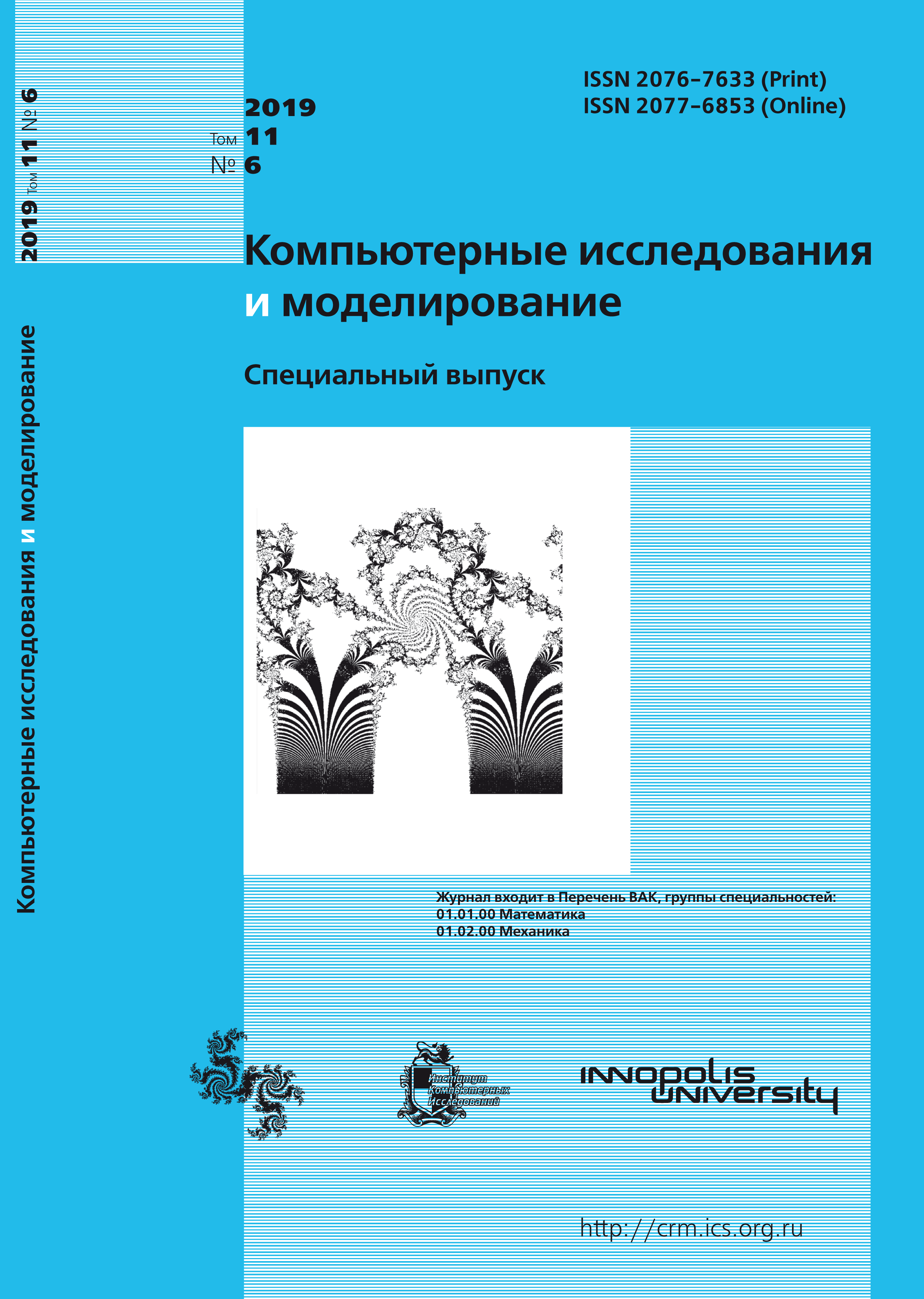All issues
- 2025 Vol. 17
- 2024 Vol. 16
- 2023 Vol. 15
- 2022 Vol. 14
- 2021 Vol. 13
- 2020 Vol. 12
- 2019 Vol. 11
- 2018 Vol. 10
- 2017 Vol. 9
- 2016 Vol. 8
- 2015 Vol. 7
- 2014 Vol. 6
- 2013 Vol. 5
- 2012 Vol. 4
- 2011 Vol. 3
- 2010 Vol. 2
- 2009 Vol. 1
Full-wave 3D earthquake simulation using the double-couple model and the grid-characteristic method
 pdf (600K)
pdf (600K)
One of the destroying natural processes is the initiation of the regional seismic activity. It leads to a large number of human deaths. Much effort has been made to develop precise and robust methods for the estimation of the seismic stability of buildings. One of the most common approaches is the natural frequency method. The obvious drawback of this approach is a low precision due to the model oversimplification. The other method is a detailed simulation of dynamic processes using the finite-element method. Unfortunately, the quality of simulations is not enough due to the difficulty of setting the correct free boundary condition. That is why the development of new numerical methods for seismic stability problems is a high priority nowadays.
The present work is devoted to the study of spatial dynamic processes occurring in geological medium during an earthquake. We describe a method for simulating seismic wave propagation from the hypocenter to the day surface. To describe physical processes, we use a system of partial differential equations for a linearly elastic body of the second order, which is solved numerically by a grid-characteristic method on parallelepiped meshes. The widely used geological hypocenter model, called the “double-couple” model, was incorporated into this numerical algorithm. In this case, any heterogeneities, such as geological layers with curvilinear boundaries, gas and fluid-filled cracks, fault planes, etc., may be explicitly taken into account.
In this paper, seismic waves emitted during the earthquake initiation process are numerically simulated. Two different models are used: the homogeneous half-space and the multilayered geological massif with the day surface. All of their parameters are set based on previously published scientific articles. The adequate coincidence of the simulation results is obtained. And discrepancies may be explained by differences in numerical methods used. The numerical approach described can be extended to more complex physical models of geological media.
Copyright © 2019 Bagaev R.A., Golubev V.I., Golubeva Y.A.
Indexed in Scopus
Full-text version of the journal is also available on the web site of the scientific electronic library eLIBRARY.RU
The journal is included in the Russian Science Citation Index
The journal is included in the RSCI
International Interdisciplinary Conference "Mathematics. Computing. Education"






